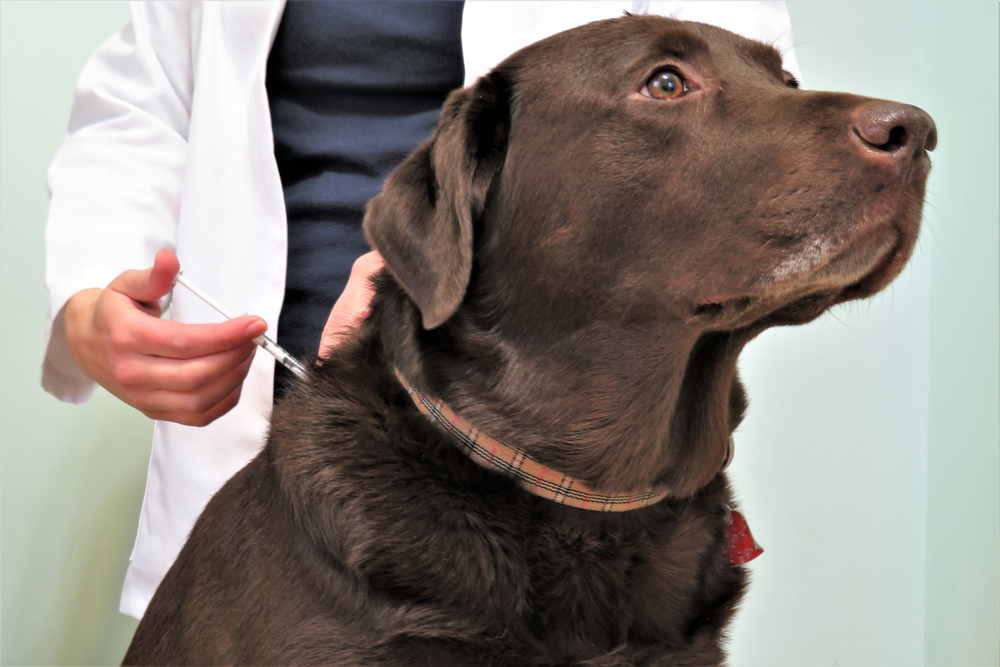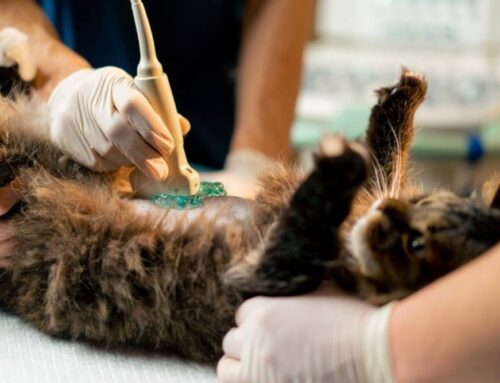When spring rolls around and the air fills with a thick yellow cloud of pollen, do your allergies go haywire? If you’re suffering from congestion, sneezing, and itchy, watery eyes, you know how miserable you feel with allergies. But, did you know your pet can also suffer from allergies? While they may not show the same respiratory-related signs, they can experience allergies caused by the same triggers. With the warmer weather, which is high time for allergy season, you need to know the following facts about allergies in your pet.
#1: Allergies in pets are typically divided into three categories
Although the same seasonal allergies that affect people are common in pets, they can also be affected by other types. The three main allergy categories include:
- Flea allergies — Flea allergies are caused by a hypersensitivity to the protein found in flea saliva, so only a few fleas can cause a dramatic reaction in an allergic pet. The hallmark flea allergy signs are hair loss on the hind legs and tail base, along with excessive licking, chewing, and scratching in those areas. Of course, once you spot fleas or flea dirt as well as those signs, your pet is almost surely suffering from a flea allergy.
- Environmental allergies — Environmental allergies can include any substance your pet contacts, such as fabrics and cleaners. They can also include inhaled allergens, such as pollen and mold. This allergy category commonly crops up during the spring and fall, and mostly disappears during the winter. However, some pets can have dust mite allergies, which become worse in the winter when the furnaces stir up dust and dry out the environment. Environmental allergies cause a wide range of signs, including generalized scratching and licking, inflamed skin, anal gland issues, chronic ear infections, and hair loss.
- Food allergies — True food allergies in pets are rare, and are most commonly caused by the protein in their diet. Chicken, beef, lamb, egg, and dairy products are the key culprits, but fish can also create allergies in cats. Pets who develop a food allergy have often been on the same diet for several years before they show any signs, which may include excessive paw licking and ear infections.
Some pets have a combination of allergy types, making an accurate diagnosis of all the pet’s allergens a lengthy process.
#2: Allergies in pets are an inherited condition
Allergies in pets are typically a lifelong problem that is passed down to the offspring. For example, if your white pit bull turns into an itchy, pink mess in the spring, their parents also likely had skin issues. Other dog breeds are simply prone to allergies and skin problems because of their anatomy. English bulldogs are the poster children for allergies, because of their numerous skin folds and wrinkles, flattened muzzle, and tight ear canals.
#3: Allergies in pets cannot be cured
Although allergies in pets cannot be truly cured, they can be successfully managed to give your four-legged friend a comfortable life. Numerous treatment options are available, and based on your pet’s allergy type, a combination of the following therapies can banish the itch:
- Corticosteroids
- Apoquel
- Cytopoint
- Immunotherapy
- Medicated shampoo
- Ear cleaners and medications
- Skin health supplements
- Prescription diets
- Antibiotics and antifungals if necessary
As your pet’s allergies change over time, their treatment protocol may become less effective, and require ongoing updates.
#4: A pet’s allergies will worsen with age
Allergy signs may first appear in your pet when they are young, sometimes under a year old. Most pets who develop allergies will begin displaying signs between 9 months and 3 years of age that, unfortunately, will continue to worsen with age. Seasonal allergies will appear earlier and last longer each year, and also will become more intense as your pet gets older. As a lifelong condition, proper management of allergy-associated signs is key to keeping your furry pal comfortable and itch-free.
#5: Only immunotherapy can address the cause of pet allergies

Immunotherapy is the gold standard of allergy treatment for pets. Consider it a “vaccine” against allergies, since the therapy works by altering the immune response to your pet’s allergens. While this injectable therapy can take 6 to 12 months to become fully effective, this is the only treatment that can reverse the course of allergic disease and provide long-term relief.
#6: Your pet’s allergy treatment will be most successful with teamwork
Managing your pet’s allergies successfully requires open communication between you and our Village Animal Hospital team. You must ask for our help as soon as you spot the earliest sign of an allergy flare in your four-legged friend. Your pet’s treatment protocol will change over the years, and keeping us informed about each therapy’s effectiveness will provide your pet with the best quality of life. Together, we can ensure your pet remains happy, healthy, and itch-free.
Do you suspect your itchy pet has allergies? Contact our Village Animal Hospital team to schedule an appointment to get to the root of your furry pal’s itching.








Leave A Comment